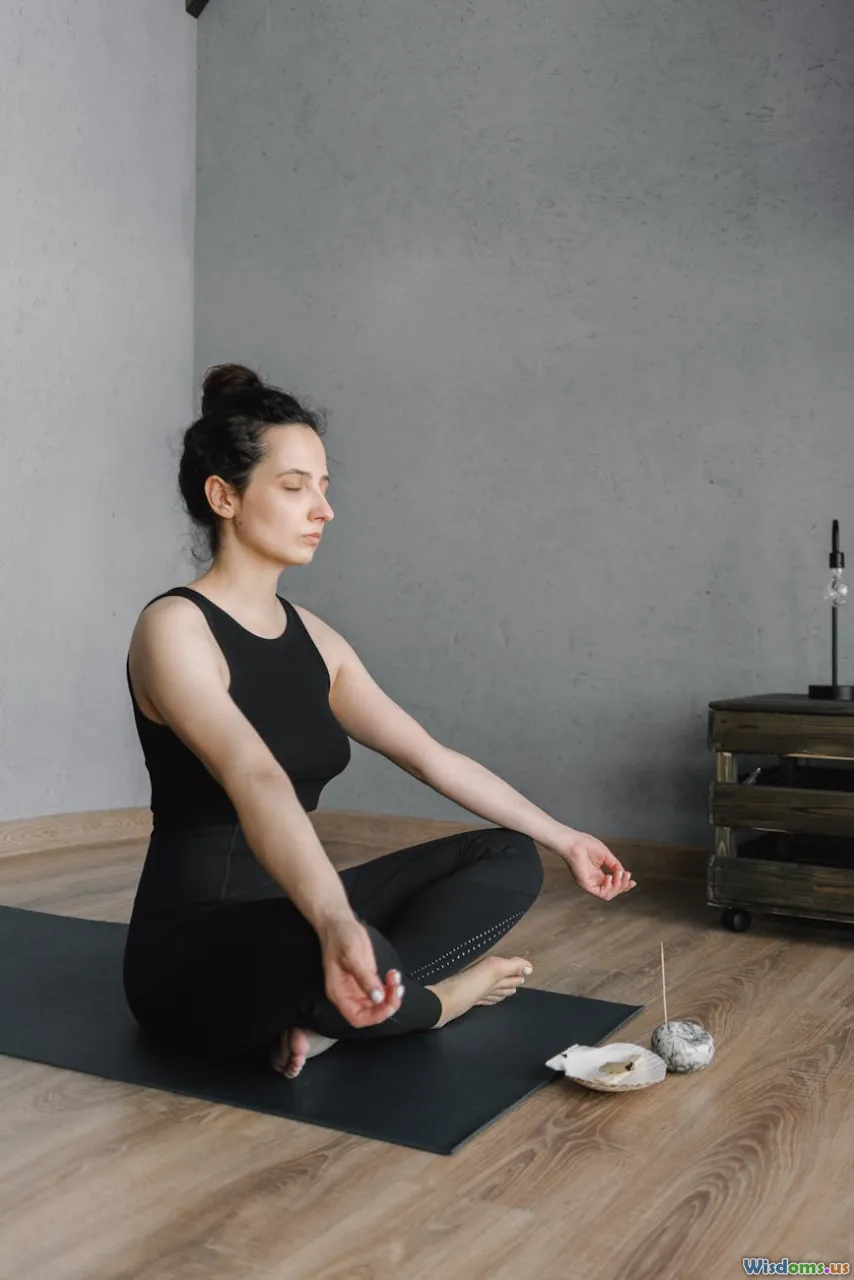
Mindfulness Practices for Busy Lives
8 min read Discover practical mindfulness techniques tailored for busy lives to enhance focus, reduce stress, and boost well-being daily. (0 Reviews)
Mindfulness Practices for Busy Lives
Introduction
In today's fast-paced world, the idea of sitting quietly and paying attention to our breath sounds nearly impossible. Yet, mindfulness—the art and science of being present—has proven to transform even bustling, hectic lives. This article delves into mindfulness strategies specifically designed for busy people who juggle work, family, and countless responsibilities but want to reclaim calm, improve focus, and foster resilience.
Imagine reducing your stress levels, sharpening your mental clarity, and feeling more grounded with just a few mindful moments scattered throughout your day. The good news: you don't need hours of meditation or to retire to a remote cabin to experience these benefits.
Understanding Mindfulness in a Busy Context
Mindfulness is often misunderstood as an elaborate, time-consuming practice reserved for yogis and monks. However, research from institutions like Harvard Medical School shows that even brief periods of mindful attention—just 2 to 5 minutes—can significantly lower cortisol levels (a stress hormone) and enhance emotional regulation.
What is Mindfulness? Mindfulness means consciously paying attention to the present moment without judgment. It’s noticing the sensations, thoughts, and emotions as they arise rather than getting caught up in them.
For busy individuals, this translates not to lengthy meditation sessions but to embedding small mindful practices into daily routines.
Practical Mindfulness Techniques for Busy Lives
1. The One-Minute Breath Check
When was the last time you took a moment just to breathe intentionally? The breath is the easiest anchor for mindfulness.
How to practice:
- Pause for one minute during your commute, at your desk, or even waiting in line.
- Take slow, deep breaths focusing entirely on the sensation of air entering and leaving your body.
- If your mind wanders, gently bring your attention back to the breath.
This little exercise acts like a mental reset button. According to Dr. Jon Kabat-Zinn, founder of Mindfulness-Based Stress Reduction (MBSR), these moments build resilience and enhance focus throughout the day.
2. Mindful Transitions
Transitions between one task and another often become lost time wasted switching mental gears. Instead, use these moments mindfully.
How to practice:
- Before starting a new activity or meeting, pause for 30 seconds.
- Close your eyes or soften your gaze, take a breath, and acknowledge how you feel physically and emotionally.
- Set an intention for the next activity, such as being present or open-minded.
This habit increases awareness, reducing scattered attention and increasing productivity.
3. The Body Scan Lite
Body scans can ground you in the present by tuning into physical sensations.
How to practice:
- While seated or lying down, close your eyes.
- Briefly pay attention to different parts of your body from head to toe or vice versa.
- Notice tension, warmth, or relaxation without trying to change anything.
Even a 5-minute body scan can decrease anxiety and tension, as demonstrated in studies published in the Journal of Clinical Psychology.
4. Mindfulness During Daily Activities
You don’t need to carve out special time to practice mindfulness; you can make everyday moments your mindful moments:
- Eating: Taste the food deliberately, chew slowly, and notice textures.
- Walking: Feel your feet connecting to the ground, the rhythm of your steps.
- Washing hands: Focus on the temperature of the water and the sensation against your skin.
This approach, known as informal mindfulness, integrates seamlessly into life without additional time commitments.
The Science Behind Mindfulness Benefits
Functional MRI studies reveal that mindfulness strengthens regions of the brain responsible for attention, emotional regulation, and self-awareness, such as the prefrontal cortex and the anterior cingulate cortex.
A large meta-analysis in JAMA Internal Medicine found mindfulness meditation programs to reduce anxiety symptoms by 20-30%. Furthermore, the American Psychological Association highlights that mindfulness reduces rumination—a key factor in depression and stress.
This evidence shows mindfulness helps recalibrate our nervous system, diminishing fight-or-flight responses triggered by everyday stressors.
Real-World Examples: Mindfulness in Action
Successful Executives Advocating Mindfulness
Top leaders like Google’s Chade-Meng Tan and Oprah Winfrey emphasize mindfulness as a cornerstone of success. Meng coined the term “Search Inside Yourself,” a famous mindfulness-based emotional intelligence program tailored for corporate environments.
Schools Implementing Mindfulness Programs
Teachers in busy urban schools implement brief mindfulness sessions between lessons that enhance focus and reduce disciplinary problems, showcasing the power of short, consistent practice.
Overcoming Common Challenges
“I’m Too Busy” Mindset
It’s common to feel too pressed for time to engage in mindfulness. Counter this by starting small—10 mindful breaths—a powerful yet manageable way to begin.
Difficulty Concentrating
Mind wandering is natural. Instead of frustration, view it as the work of training attention. Each time you notice distraction and return to the present, you’re strengthening your mind’s 'muscle.'
Conclusion
Mindfulness is not a luxury or a time-consuming ritual reserved for retreats; it is an essential life skill accessible to busy people everywhere. By incorporating brief, practical techniques—such as breath checks, mindful transitions, and body scans—you can transform your stressful days into calmer, focused, and more productive experiences.
As Jon Kabat-Zinn puts it, “You can’t stop the waves, but you can learn to surf.” Mindfulness equips you with the surfboard. Start with a minute a day and watch the ripple effect on your well-being and performance unfold.
Take action today: pick one technique from this article, practice it consistently for a week, and notice how it reshapes your approach to a hectic life.
References:
- Harvard Medical School, “Mindfulness Meditation: A research-proven way to reduce stress”
- JAMA Internal Medicine, 2014, “Meditation Programs for Psychological Stress and Well-being”
- Journal of Clinical Psychology, 2010, “Mindfulness-Based Cognitive Therapy for Anxiety and Depression”
- Kabat-Zinn, J., Wherever You Go, There You Are
- Chade-Meng Tan: Search Inside Yourself
- American Psychological Association, “Stress in America” report
Rate the Post
User Reviews
Popular Posts





















